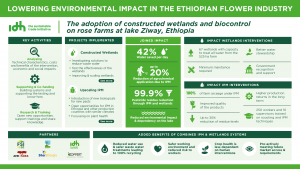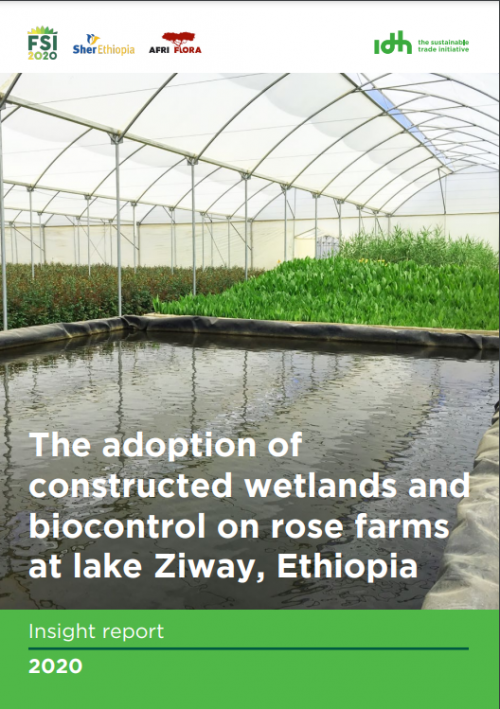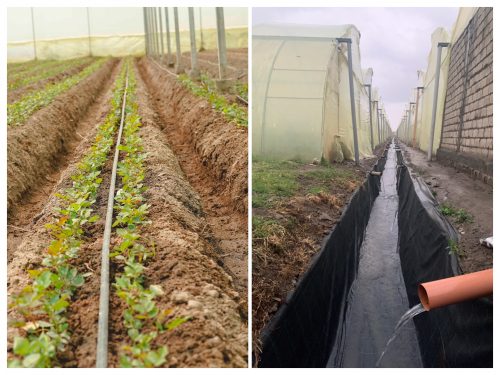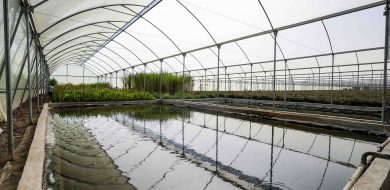Closed loop water system and constructed wetlands for filtration and purification
Sher Ethiopia uses a unique closed loop system for water recycling, which has been specially developed to filter and reuse water. The so-called wetlands were designed by the Wageningen University and Research Centre in the Netherlands. These wetlands purify all wastewater. After purification, the water is reused to irrigate rose plants.
Firstly, we collect all wastewater. Then drainage water, residual water from spray lines, buckets, wrappers, toilets, etc. Carbon-based filter beds, which feature reed plants, can be found inside the greenhouses. Reed is a natural filter. The roots of these plants purify the water. The fact that the fish, which have been added to the basins, stay healthy and thrive, proves that the water is clean. The water then flows back into the Vocom (the distribution system for irrigation), where it is re-used to irrigate rose plants. This closed loop system prevents water from flowing into the lake.
In a joined effort with Ecofyt, Wageningen University, Koppert, FSI and IDH this knowledge has been made widely available. This has led to the implementation of many constructed wetlands in many countries.

In 2019, IDH commissioned Keith Jones, a pesticide expert, to analyse the projects’ interventions and the technical characteristics of the innovations introduced. The projects focused on two themes: The construction of wetlands to reduce pesticide pollution to the lake, and integrated pest management (IPM) practices based on the introduction of biological control (biocontrol) agents. This is used to replace the use of synthetic chemical pesticides.
The study concluded that constructed wetlands and IPM practices are complementary, as the reduction in the use of chemical pesticides. Resulting from adoption of IPM leads to higher efficiency of the wetlands, and as such presents a cost-effective opportunity of significantly reducing the risk to workers and the environment.
Furthermore, additional literary research links the findings to the status of regional production as well as the latest developments on wetland and IPM technology. It includes consideration to further promote the use of wetlands and facilitate the development. It also includes uptake of current and new biocontrol options in the region.

Drip irrigation is used in all our greenhouses. A drip line is a plastic hose, which features small holes and is placed in the rose beds. These little droplets help to water the rose plants. This is the most efficient way to use the water and a lot of water is saved compared to traditional furrow-irrigation. With drip irrigation we are able to produce ‘more crop per drop’. In total there is over 4,800 kilometers of dripline in our greenhouses! In addition to that, all rainwater is harvested and stored in a canal to be used for irrigation purposes. This way we minimize the water extracted from the lake or river.

